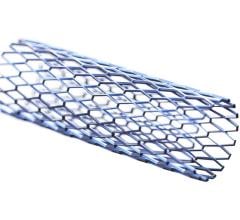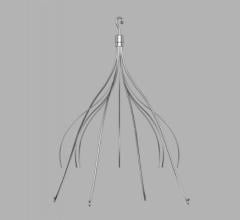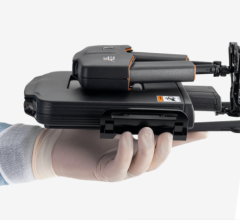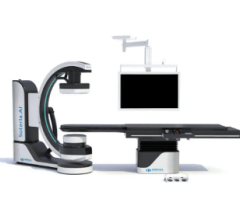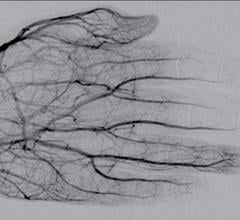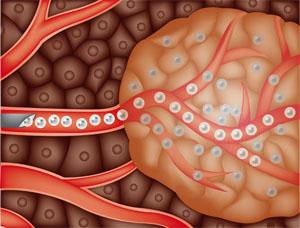
December 2, 2013 – A new study reports that individuals who underwent embolization of the left gastric artery for gastrointestinal bleeding experienced a 7.9 percent decrease in body weight three months after the procedure. Results of the study, which offer a potential new avenue for obesity research, will be presented next week at the annual meeting of the Radiological Society of North America (RSNA).
Transarterial embolization is a common interventional procedure used to treat a variety of medical conditions. In the image-guided procedure, an embolic, or obstructive, agent is inserted through a catheter and placed inside an artery to prevent blood flow in an artery or to a specific area of the body. Types of embolic agents include beads, coils and gel foam.
In the retrospective study conducted at Massachusetts General Hospital in Boston, researchers reviewed the records of patients who underwent transarterial embolization for upper gastrointestinal (GI) bleeding. The study group included 14 patients who underwent embolization of the left gastric artery, which supplies blood to the part of the stomach where the hormone ghrelin is predominantly produced.
"Ghrelin is the only hormone known to stimulate the appetite, so it is an intriguing potential target for combating obesity," said senior researcher Rahmi Oklu, M.D., Ph.D., assistant professor of radiology at Harvard Medical School. "Animal studies have shown that when this artery is blocked, blood levels of ghrelin decrease and weight loss occurs."
The study also included a review of the records of 18 age-matched control patients who were treated for upper GI bleeding with transarterial embolization of a different upper gastrointestinal artery. The study group included eight men and six women with a median age of 66.1 years; the control group included eight men and 10 women with a median age of 63.5 years.
The researchers found that patients who underwent left gastric artery embolization lost an average of 7.9 percent of their body weight within three months of the procedure. Weight loss within the control group was 1.2 percent during the same time frame.
"Embolizing the left gastric artery may be a potential bariatric treatment for weight loss and an alternative to other invasive procedures," Oklu said. "This is an important data point in the development of a new clinical tool for the treatment of obesity."
Oklu pointed out that left gastric artery embolization performed by an interventional radiologist is low risk when compared to more invasive weight loss interventions, such as gastric bypass and laparoscopic approaches.
"The effect of left gastric artery embolization will need to be studied in larger populations and eventually in prospective trials," he added.
The Centers for Disease Control and Prevention report that 69.2 percent of U.S. adults over the age of 20 are overweight, and 35.9 percent of adults over age 20 are obese.
Co-authors are Andrew J. Gunn, M.D. (lead author), and Elizabeth J. Hamilton, B.S.
AT A GLANCE
- Individuals who underwent embolization of the left gastric artery for gastrointestinal bleeding experienced a 7.9 percent decrease in body weight three months after the procedure.
- The left gastric artery supplies blood to the part of the stomach where the appetite-stimulating hormone ghrelin is predominantly produced.
- Left gastric artery embolization is low risk when compared to more invasive weight loss interventions, such as gastric bypass and laparoscopic approaches.
For more information: RSNA.org


 January 09, 2024
January 09, 2024 
